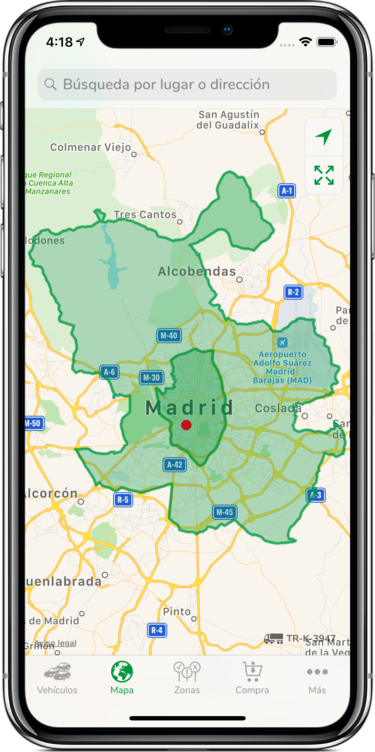Top low emission zones
Paris
The Paris Low Emission Zone is one of a total of over 35 zones in France. The city plays a special role in this. Paris as a city, as well as the greater Paris area, has a total of 4 low emission zones with different rules and areas. Some zones are permanently valid and others are only temporary. In the permanent zones, also called ZPA zones, the French environmental badge (Certificat qualité de l'air) is always obligatory. The temporary zones are only active when air quality requires it. If an air pollution peak is reached, the zone comes into effect and now the vignette becomes obligatory here as well. This can happen within a very short time.
Lyon
Lyon is the third largest city in France and was one of the first cities to introduce a weather-related air protection zone (ZPA) on 12.12.2016, which is activated in the event of an air pollution peak. When activated, driving bans apply to all vehicles without and with insufficient French vignettes. On 01.01.2020, the temporary zone was extended to include a permanently valid low emission zone (ZFE), which, however, only affects all light commercial vehicles (N1) and HGVs (N2, N3). On 21.12.2020, Lyon became the second city to introduce environmental lanes, which can only be used by electric vehicles with a French green E sticker and carpools during heavy traffic.
Strasbourg
In order to be prepared for the recurring pollution peaks, a temporary Low Emission Zone (ZPA) was introduced in the Eurometropolis of Strasbourg on 31.10.2017, which applies to all vehicles in the event of persistent air pollution. On 01.09.2018, a permanent Low Emission Zone (ZFE) has been established in the centre of the city on the big island (Grande Ile). The island is bordered by the Ill River to the south and the "Faux-Rempart" canal to the north. The initially temporary driving ban for trucks under 7.5 t will be extended to all vehicles without and with Vignette 5 in 2022.
Grenoble
Since 2017, low emission zones have been continuously introduced in and around Grenoble, a ZFE, ZPA and ZPAd. In May 2019, a permanent low emission zone was added to the weather-related low emission zones, covering the territory of the city of Grenoble and the 27 surrounding communes. As Grenoble is a major traffic hub and the main axes are often very busy due to congestion during rush hour, Grenoble became the first French city to introduce an 8km environmental lane on 28/09/2020. Any violation of the vignette obligation and of the traffic restriction is punished with a fine of up to 375 euros.
On 01.07.2016 an environmental sticker with the designation Certificat qualité de l'Air was introduced in France. Since July 2017, all vehicles, including foreign vehicles, entering French low emission zones must have a valid French vignette, which is obligatory for each vehicle category. The vignette can be divided into 6 categories and colours, depending on the year of registration, energy efficiency and vehicle emissions. The Certificat qualité de l'Air is valid in all fixed, permanently valid environmental zones (ZFE/ZCR) and weather-related temporary zones (ZPA/ZPAd). Fines of € 68 - 375 apply for a missing vignette.



The Green Zones app helps you to keep track of things. With over 200 low emission zones in Europe you have everything at a glance. Where are there driving bans? Am I affected? When can I drive in and when not? What kind of fines do I face? Is my hotel in a low emission zone? Where can I still drive in with my old vehicle? How is the air quality in my city? You can see all this and much more in the Green Zones app, personalized for your vehicle.















